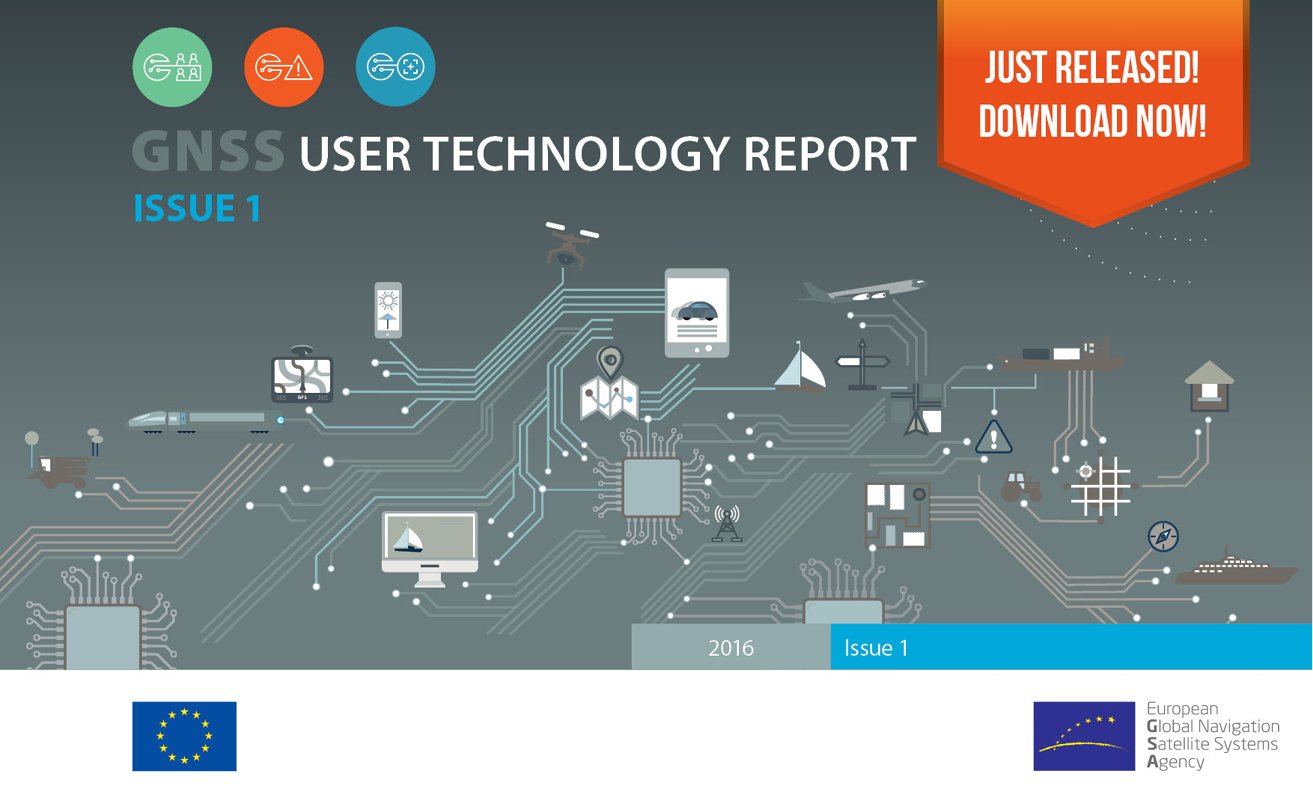What lies ahead in the GNSS chipset and receiver domain and what are the trends sure to transform the GNSS landscape of tomorrow? Download the GSA’s first GNSS User Technology Report now to find out.
In recent years, GNSS technology has experienced a period of rapid development  – both on the side of global constellations and user receivers. With this development, European systems such as EGNOS and Galileo are becoming increasingly present in GNSS receivers, providing enhanced performance to users both in Europe and worldwide. Even with the increased deployment of other positioning technologies, because it is the most widespread and cost-effective source of location information, GNSS will remain at the core of all positioning technology.
– both on the side of global constellations and user receivers. With this development, European systems such as EGNOS and Galileo are becoming increasingly present in GNSS receivers, providing enhanced performance to users both in Europe and worldwide. Even with the increased deployment of other positioning technologies, because it is the most widespread and cost-effective source of location information, GNSS will remain at the core of all positioning technology.
“In view of the changing user needs in terms of expected positioning experiences, the appearance of new and modernised GNSS signals, and advances in semiconductor technologies, we felt the need to take a closer look at the impact these changes will have on user technology and GNSS’ role in the positioning solutions of the future,” says GSA Executive Director Carlo des Dorides.
A closer look
The outcome of this closer look is the GSA’s first GNSS User Technology Report. As a sister publication to the GNSS Market Report, the GNSS User Technology Report zeros in on the state-of-the-art GNSS receiver technology, along with analysing the trends that are sure to change the entire GNSS landscape. The Report provides an in-depth analysis of GNSS user technology as it pertains to the three key macrosegments of mass market solutions; transport safety and liability-critical solutions; and high precision, timing and asset management solutions. In addition, the Report gives a general overview of the latest GNSS receiver technology, common to all application areas, along with a supplement on location technologies that looks beyond GNSS in the positioning landscape.
Written with contributions from leading GNSS receiver and chipset manufacturers, the GNSS User Technology Report is meant to serve as a valuable tool to support planning and decision-making in regards to developing, purchasing and using GNSS user technology. “GNSS user technology is, now more than ever, experiencing a rapid and exciting evolution, answering the needs of ubiquity, automation and secure positioning,” adds des Dorides. “This report explores in detail all of these new developments and how they will bring continuous location service, reliability and robustness to the main application domains.”
The Report is free and can be downloaded here.
Did You Know? |
|
A note on methodology
The GNSS User Technology Report uses the GSA’s internal Technology Monitoring process (TMP).
It complements the market monitoring and forecasting process, and its objective is the monitoring of trends and developments in the GNSS supply industry. It supports the GSA in the definition of the best strategy towards Galileo market adoption, provision of updated statistics on Galileo penetration in user terminals and chipsets, and analysing Galileo positioning among other GNSS and location technologies.
Part of the process is to keep up-to-date independent analysis, which assesses the capabilities of receivers, chipsets and modules currently available on the market. For the analysis, each device is weighted equally, regardless of whether it is a chipset or a receiver, and no matter what its sales volume is. The results should therefore be interpreted not as the split of constellations utilised by end users, but rather the split of constellations available in manufacturers’ offerings.
The analysis includes all major receiver manufacturers in Europe and worldwide: Avidyne, Broadcom, CSR, Esterline, Furuno, Garmin, Hemisphere GNSS, Honeywell, Infineon, Intel, Japan Radio Co., John Deere, Kongsberg, Leica Geosystems AG, Mediatek, NavCom Technology,
Nottingham Scientific Ltd, NovAtel, Omnicom, Orolia, Qualcomm, Rockwell Collins, Septentrio, SkyTraq Technology, STMicroelectronics, Texas Instruments, Thales Avionics, Topcon, Trimble, U-blox, Universal Aviation.
Search and Rescue, defence and public utilities receivers, chipsets and modules are not part of the analysis.
The information contained within the Report is a compilation of in-house knowledge, desk research, scientific papers, receiver and other user technology manufacturer’s websites and, if needed, verified by consultation with experts in the relevant domain.
Media note: This feature can be republished without charge provided the European GNSS Agency (GSA) is acknowledged as the source at the top or the bottom of the story. You must request permission before you use any of the photographs on the site. If you republish, we would be grateful if you could link back to the GSA website (http://www.gsa.europa.eu).